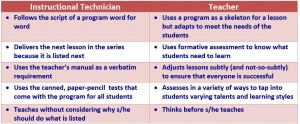Stop me if you have heard these before.
- Cursive is dead.
- No one needs to write anymore.
- Pretty soon we won’t even write anything by hand anymore.
- I don’t know why we have to teach handwriting; when are kids going to use it anyway?
Handwriting has a bad rap; recently it has been relegated to a second (or third or fourth) class subject to teach, and not without reason. ” Back in the day” as they say, handwriting was prominently taught and assessed and even celebrated. Remember your teacher giving you that gold star or posting the paper in the prettiest writing? We abandoned these practices (and rightfully so) in favor of more academic pursuits–namely reading and writing (content, not penmanship).
Handwriting in the Common Core
Now, we are on the precipice of a new age of standards and assessment: Common Core State Standards. Whether you have fully embraced the standards or are firmly hanging on the fence, we know that these are bringing sweeping changes, especially in the area of writing. Under the Standards, writing is equally emphasized with reading; students are going to be expected to write, and write a lot.
Wait, you say. The Common Core State Standards assessments are intended to be online. Students will be using a computer to write. Should’t we be teaching typing, then? How can teaching handwriting help students to be not only assessment-ready but also College and Career Ready, the goal of CCSS?
Handwriting can be a huge help in preparing our students. First, while the assessments are intended to be online, there is no guarantee that every school in the nation will be ready for this technological feat. Therefore, knowing that students will have to produce two pages in a single sitting in fifth grade, we have to prepare our students to accomplish this in a variety of ways. Yes, teach typing skills, but also teach students handwriting skills.
What do we teach?
First, start with a proper pencil grip. Have you ever seen a kid with a poor grip? It will wear him out and he will run out of steam before he competes his ideas. While you are at it, teach them how to sit and keep their paper. While they don’t have to sit at perfect 90° posture, it helps to not slouch across your desk with your notebook askew.
Also, teach a proper and consistent way to make letters. I have watched kids write letters in all different ways: start at the top and go down, start at the bottom and go up, go backwards, and so on. If a student is thinking about how to make a letter every time he starts it, that is taking up valuable cognitive desk space, or working memory. Working memory that could be used for more important stuff, like ideas and content.
Don’t forget about cursive, though. There is evidence that cursive is beneficial to students. First of all, many kids who have poor printing often find that their cursive is neater (because you don’t have to pick up your pencil–a common source of sloppiness). It also can be speedier, because of the fluid motions instead of short choppy ones. Research also indicates that writing in cursive activates the more creative sections of the brain, therefore improving the quality of writing. That’s right, you read it right here: cursive can make you more creative.
Fast Facts
An estimated 10-30 percent of elementary students struggle with handwriting. Research indicates that direct, explicit, brief handwriting lessons:
- Can help all students improve their handwriting.
- Improves fluency in writing and results in higher test scores.
- Has a reciprocal effect on reading by increasing automatic recognition of letters and sight words, thereby improving reading.
- Improves writing content because students can concentrate on meaning instead of letter formation.
Now, go forth and teach handwriting. If you want information, I really like the resources and materials from Zaner-Bloser.com
Check out a clip from the local news on WJZ in Baltimore about Handwriting!
